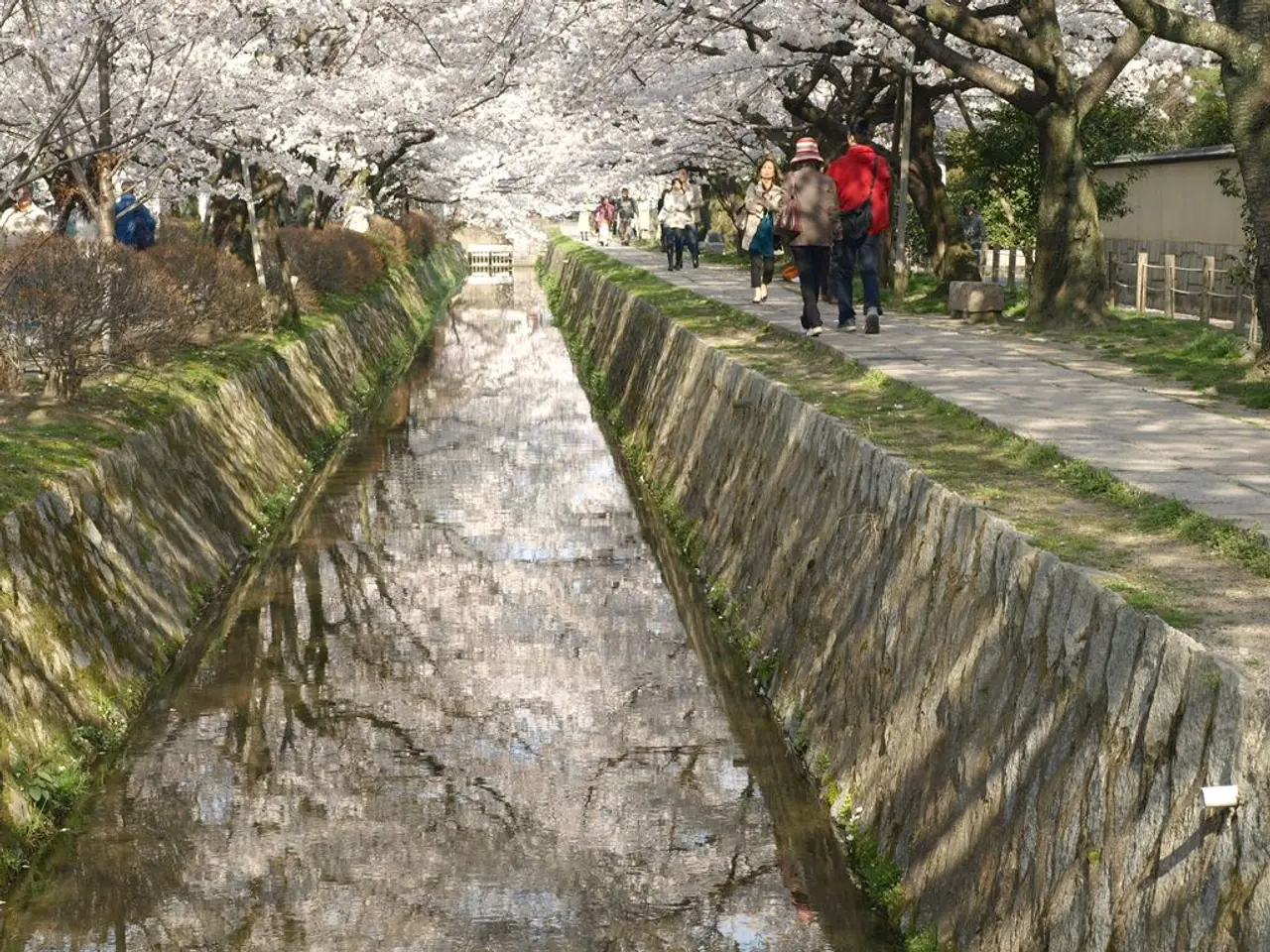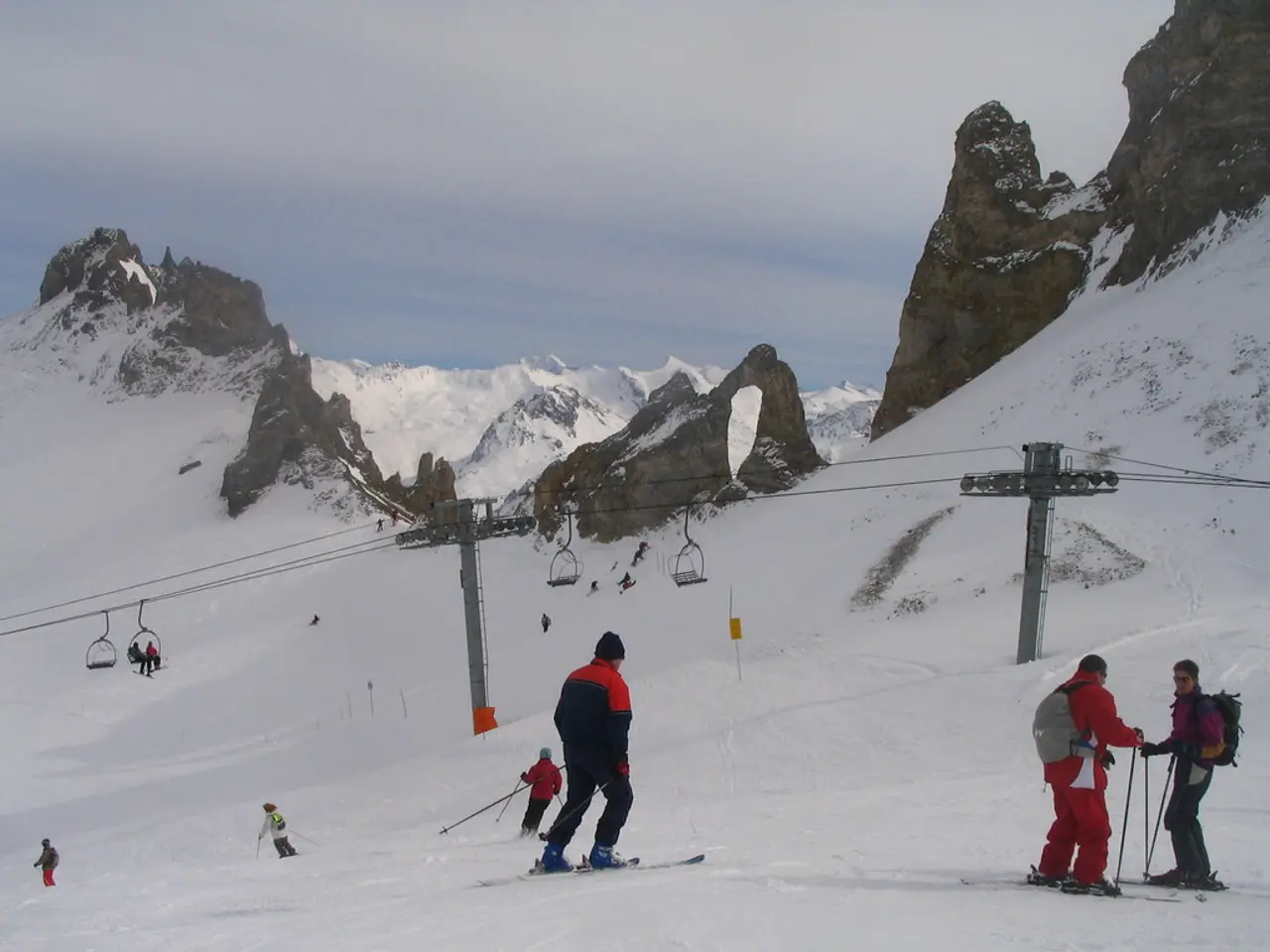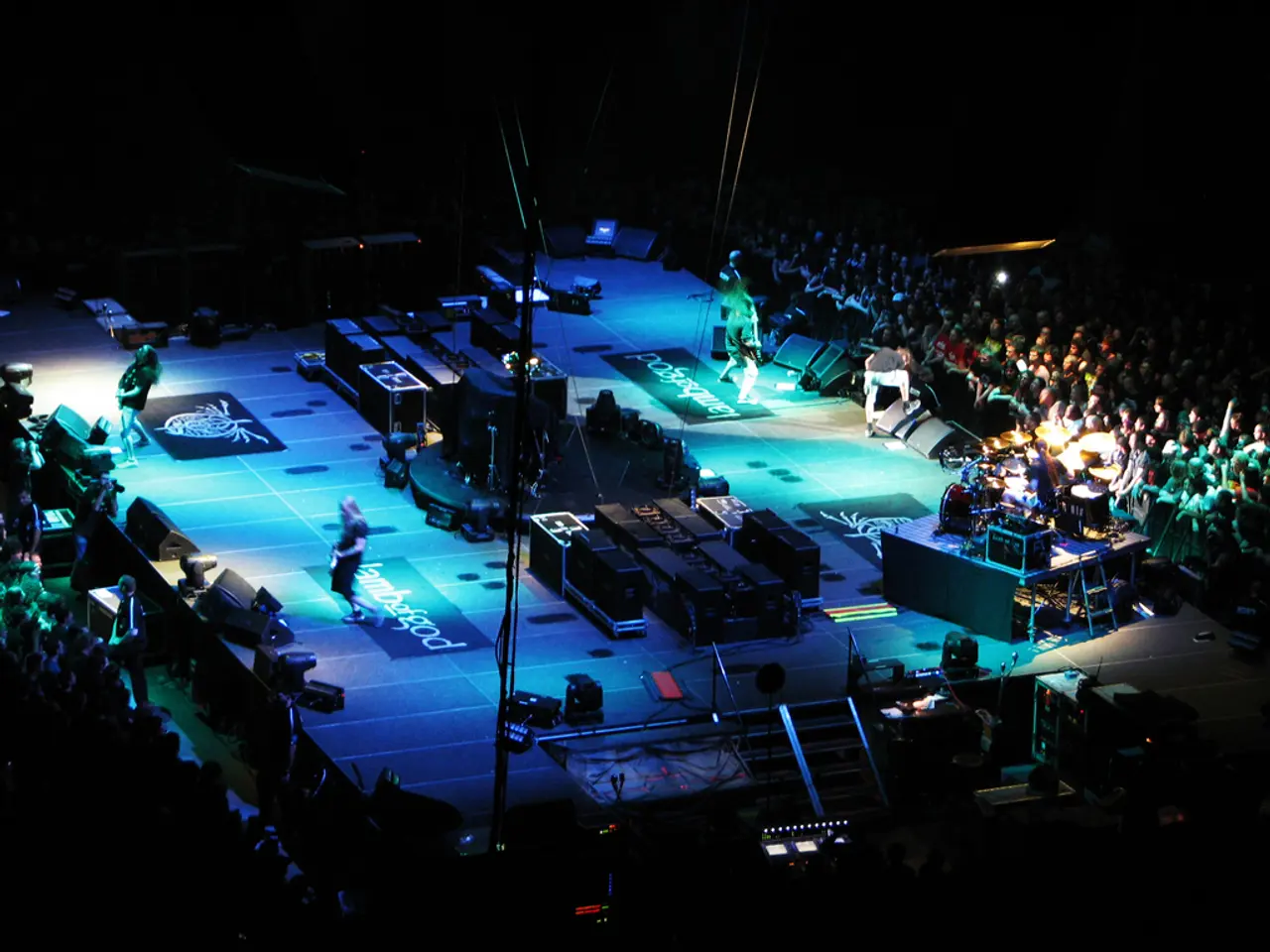Camping without water or electricity supplies: Understanding why hikers and RV travellers highly recommend it
In the realm of outdoor adventures, dry camping, or boondocking, has become a common practice, especially in areas lacking crystal-clear ponds or accessible aquifers. This article offers expert tips on water consumption preparation, transportation methods, and additional considerations for multi-day hikes in arid regions.
### Water Consumption Preparation
When embarking on a dry camping journey, it's crucial to plan for an ample water supply as natural sources can be scarce. A general rule of thumb is to estimate around 2-4 liters per person per day for drinking alone, with more required if temperatures are high or physical activity levels are high.
To ensure you're well-equipped, carry more than your minimum estimate to cover cooking, hygiene, and unexpected delays. If uncertain natural water sources exist nearby, bring water purification methods such as tablets or portable filters to reduce the volume you need to carry.
Practice strict water conservation by taking short or no showers, minimising washing, and using water only for essential cooking and drinking. Store your water in sturdy, reusable water bottles or hydration bladders designed for hiking, which are easy to refill and carry.
### Transportation Methods for Multi-Day Hikes in Arid Regions
Backpacking, with a lightweight backpack fitted with hydration systems and enough capacity for food and water, is the most common method. Choose backpacks with good ventilation to reduce sweating.
Use hydration bladders or multiple water bottles for easy access during hiking. Ensure containers are leak-proof and balanced in your pack.
Carry multi-purpose gear that is lightweight and compact, such as a waterproof shelter (tent or hammock), a sleeping bag suited to desert temperature swings, and cooking gear efficient for limited fuel use.
Route planning is essential. Select campsites near but not in dry washes to avoid flash floods but benefit from slightly cooler conditions and potential vegetation. Camp at least 200 feet from water sources to protect them and set up on durable surfaces like rock or dry grass to avoid damaging delicate desert ecosystems.
### Additional Tips
Bring non-perishable, lightweight, high-energy food to reduce water needed for cooking and cleaning. Plan hikes during cooler parts of the day and rest during peak heat to reduce water loss through sweat.
Know possible emergency water caches or natural collection points along your route. Cactus and badlands bring a unique aesthetic to desert camping, including famous attractions like Arizona's Grand Canyon and New Mexico's White Sands National Park.
Cyclists can carry large amounts of water on their bike frames for long hikes. Skiing or snowshoeing can also help transport water by pulling a sled. Even in the driest places on Earth, such as Chile's Atacama Desert, outdoor adventures are still possible and attractive to many adventurers.
In summary, successful dry camping in arid regions requires careful water rationing, carrying sufficient water in reliable containers, and using efficient, lightweight gear. Always plan routes and campsites smartly to balance safety, comfort, and environmental protection.
During your dry camping expedition, it's advisable to refer to travel guides specializing in sports for suggestions on suitable equipment for carrying large amounts of water, such as bicycles or skis with integrated water storage systems. Additionally, these travel guides can provide recommendations on sports-related activities in arid regions, like cycling and hiking around famous attractions such as Arizona's Grand Canyon or New Mexico's White Sands National Park.








